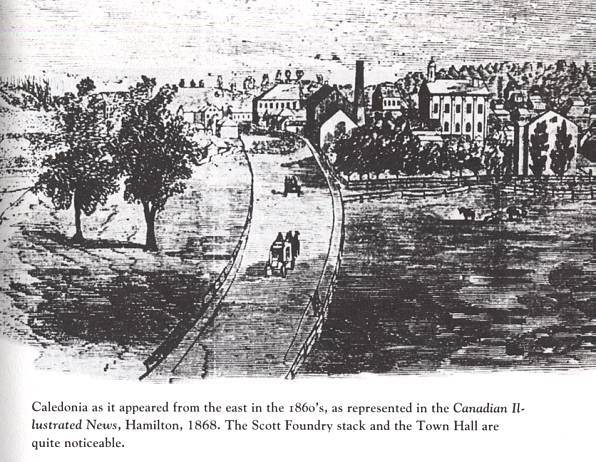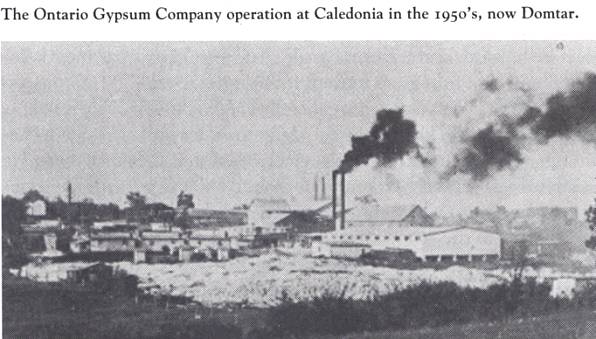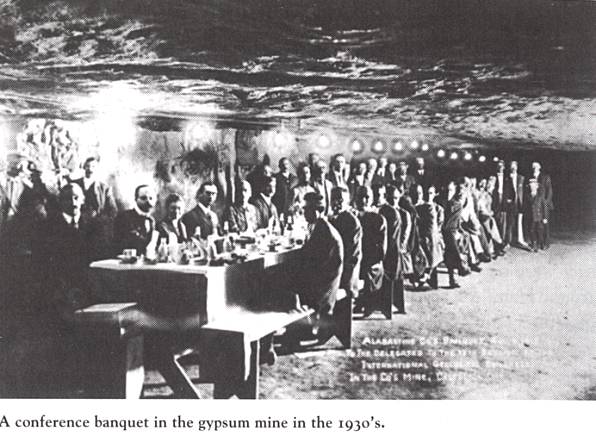Caledonia’s early history includes the Caledonia
Foundry and Iron Works, better known as the Scott Foundry. Its huge stack
was dominant from 1854 to 1881.
The immense building extended from Edinburgh Square east, covering
the property where today three houses stand, across from the fairgrounds.
A stove once manufactured at the Scott Foundry is among the artifacts
exhibited at Edinburgh Square Heritage and Cultural Centre.
In its early days, with John Scott as owner, the
foundry manufactured all kinds of mill gearings and machinery in general.
Later, its advertising featured a complete assortment of ploughs, harrow
cultivators, horse rakes, threshing machines, stoves and other major
products as available. These advertisements were distributed across Canada
and the United States.
In 1862 a twenty-five horsepower
engine was sent to Oil Springs, USA along with two, 1,700 pound each, box
stoves designed for steaming purposes. At that same time the company was
manufacturing a circular mill to be shipped to Thunder Bay, Michigan, the
twelfth circular mill shipped out over a short period of time. Messrs.
Scott and Company were congratulated in the newspaper for not only
competing with American foundries, but surpassing them in the manufacture
of circular mills.

While mills and foundries were part of many small towns
getting their start in those years, the Caledonia Foundry and Iron Works
seemed to excel. In addition to building an export business, the foundry
looked to its local market and were responsible for the iron work on the
1875 Caledonia bridge.
During the same period, chair and furniture factories
were important businesses in many beginning villages. Caledonia was no
exception. The furniture factory owned by John Builder was in Caledonia,
while the chair factory operated in the village of Seneca.
A March 1987 City and Country Home
magazine article stipulated that rod-back dining chairs produced about
1850 in Caledonia area were still in existence as family heirlooms. Today,
there are homes in Caledonia still possessing household furniture and
chairs from that era.
Caledonia’s Gypsum History
"It took five tons of Caledonia’s Alabastine tinted
pink to spray Yonge Street in Toronto for the Easter Parade. And after the
parade it took Toronto firemen no time at all to
wash it down the sewers.
That bit of information is not generally known by
Caledonia residents who have taken the chief industry of the town for
granted since its beginning in 1905. But Earl Gillespie remembered that
and much more. He was an integral part of the plant from 1937
to 1982 in research, development, management
and technical areas.
According to the late Gillespie, the Grand’s old river
bed has everything to do with the discovery of gypsum deposits. Even the
Hagersville’s Canadian Gypsum Company mines, some ten miles away, are
considered a coincidental result of the Grand River Valley’s dried up sea
beds.
The story of the "plaister beds" or gypsum goes back to
1822 when William Holmes made the discovery on the banks of the Grand
River, about a mile below the town of Paris, Ontario. A plant was
established at Paris in 1896, and not long after, leases were taken out on
gypsum deposits below York in Haldimand. This led, shortly thereafter, to
the opening of the mine at Caledonia when gypsum was located there in 1905
while men were drilling for gas.

The gypsum rock was loaded into a one-ton car, hauled
to the surface by a horse and dumped into a storage bin. It was then moved
by wagon and donkey along a donkey track to the train, destined for Paris
for processing. That first mine provided employment for many Caledonians
over its more than fifty year span. Located just north of the plant and
under No. 6 highway, the mine is no longer in use.
The second mine is a little more than a mile to the
west of the first. The third location, now also being mined, is east of
the highway. This mine may eventually extend much further to the east
perhaps as far as the village of York.
Earl Gillespie remembered when it
took a month to train the horses and donkeys that pulled the cars along
eleven miles of track in the No. 1 mine. "Donkeys were used instead of
horses because they would drop their heads to refrain from hitting the
roof of the mine," he said. It was in the 1940’s that the four-wheeled
diesel-electric buggy came to Caledonia to replace the animals. It was
Earl’s responsibility to sell the twenty horses who had become friends of
the workers, but were no longer needed.
He also remembered hearing about banquets being held in
the mine during the very early years for some sixty people. Here the
company would often host dealers to promote products. "They must have been
rather cool affairs", he said, "the temperature in the mine remains at
55 degrees, winter or summer."

In the beginning, gypsum rock was ground to a fine
powder and used as a carrier. The original Tom Morrison family who came to
Caledonia from Scotland as stone dressers were skilled in using a hammer
and chisel. "It is a real art in dressing stones that made the powder,"
said Earl.
At one time, a by-product known as Alatint was sold on
the market as a Potato bug killer, in a pink or green colour. One year
it turned out to be grey. There were numerous
complaints from customers who claimed the grey powder didn’t do the job
nearly as well. Earl told this story with a smile. He also remembered a
Milton mushroom farmer bartering his truck load of mushrooms for a truck
load of gypsum, a valuable fertilizer.
"Many don’t realize that the Caledonia Plant was
responsible for setting up other plants in Canada and in other countries,"
said Earl. For instance the Montreal East plant was built under Caledonia
management to ship the Caledonia products to Scotland and England. The
Caledonia Plant also built sites at Rochester in Kent, England and in
Sheildhall at Glasgow, Scotland. Caledonia’s interest in both plants were
later sold out to British Gypsum. Both are now owned by Westroc, a
competitor of Domtar.
There were some one hundred and twenty-five employees
in 1937 when Earl first joined the company, mainly residents of the town.
But during World War II, people had to be brought in from other parts of
the country. As Earl recalled, many came from Westinghouse and Stelco who
were on strike at the time.
The war had a big effect on the Caledonia plant when
wartime industries were needed. Hundreds of wartime houses were built very
quickly around Hamilton and area with the new wallboard being produced at
the Gypsum plant. Caledonia was the first to manufacture wallboard. Since
1916 it has been the chief product and today remains the primary product
of the gypsum produced by Domtar Gypsum.
Another wartime effort included working with Fleet
Aircraft to develop a formula of a mixture of Lumnite Cement and Plaster
of Paris to produce the molds for the fenders of the Fleet aircraft. As
well, the floors of all the arsenals used in Canada during the war came
from the Caledonia plant. In addition, the Caledonia plant was one of the
first manufacturers of Rock Wool when they used slag from Stelco in the
production of insulation.
One of the three biggest companies in North America,
Domtar Gypsum, as the company is now known, has been very aggressive in
the last few years with takeovers in the United States.
The Caledonia operation expanded in 1979 to include a
second plant on the east side of No. 6 highway. Today, it employs
approximately two hundred people. The Edinburgh Square Heritage and
Cultural Centre at Caledonia’s old town hall houses the only museum in
North American that claims to tell the story of gypsum. Earl Gillespie, as
the Chairman of the Board for the Centre, was instrumental in ensuring
that the story of this major company would be available to the public.
